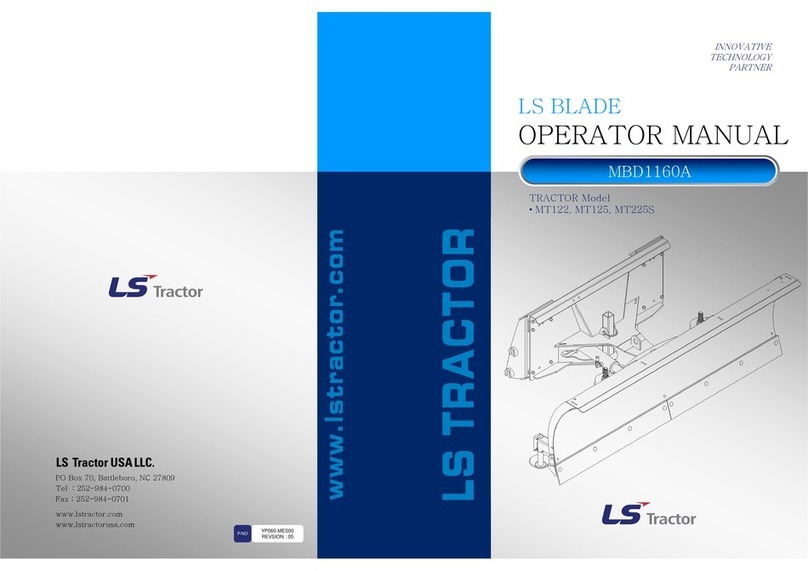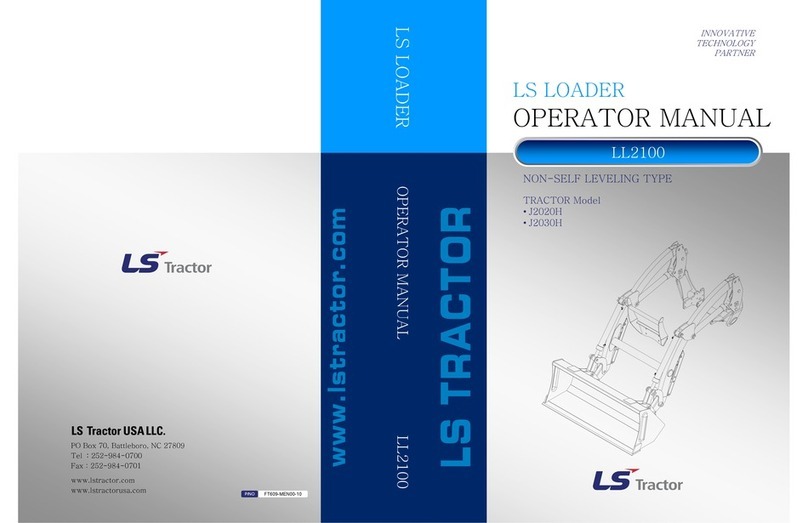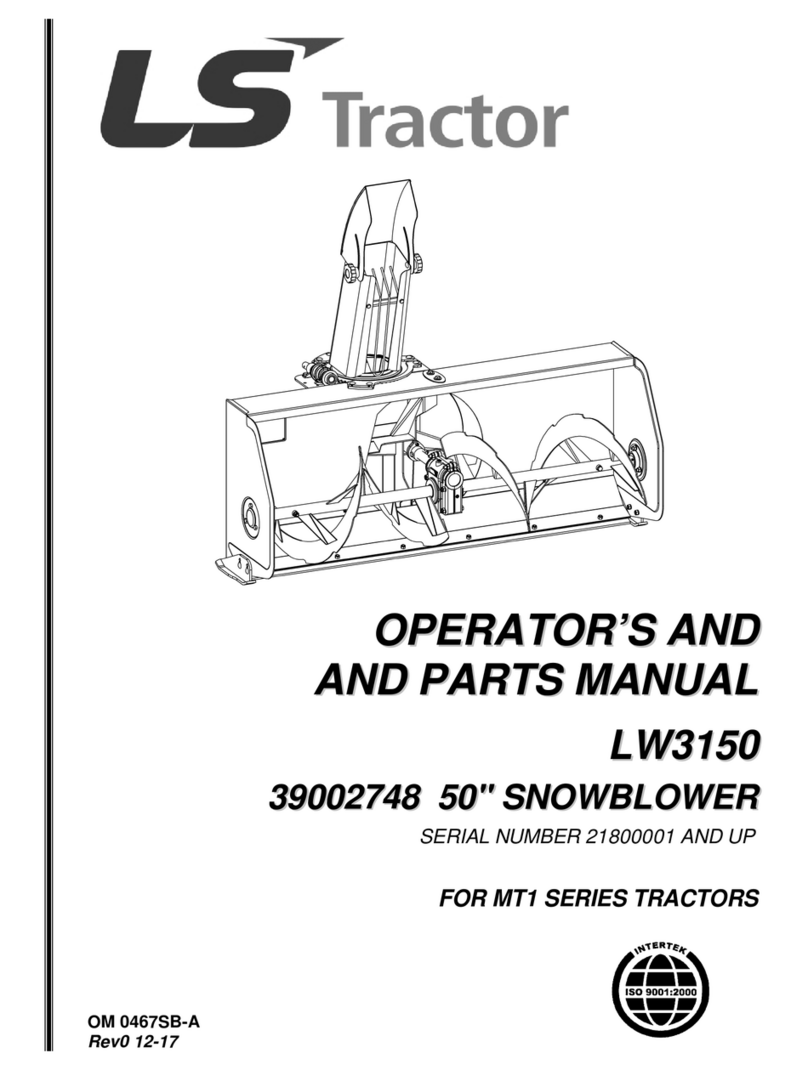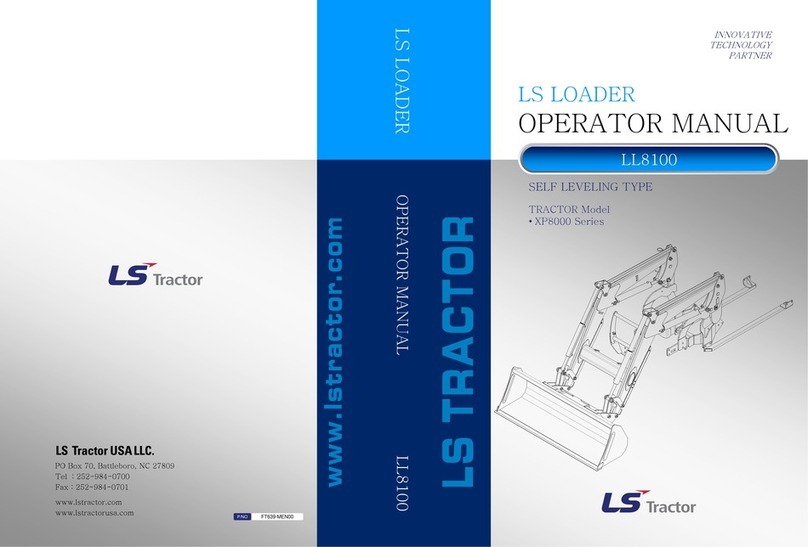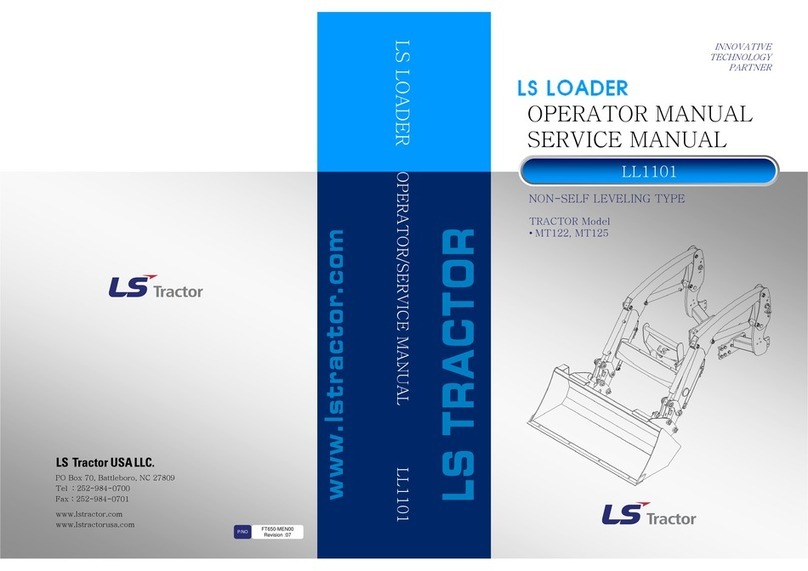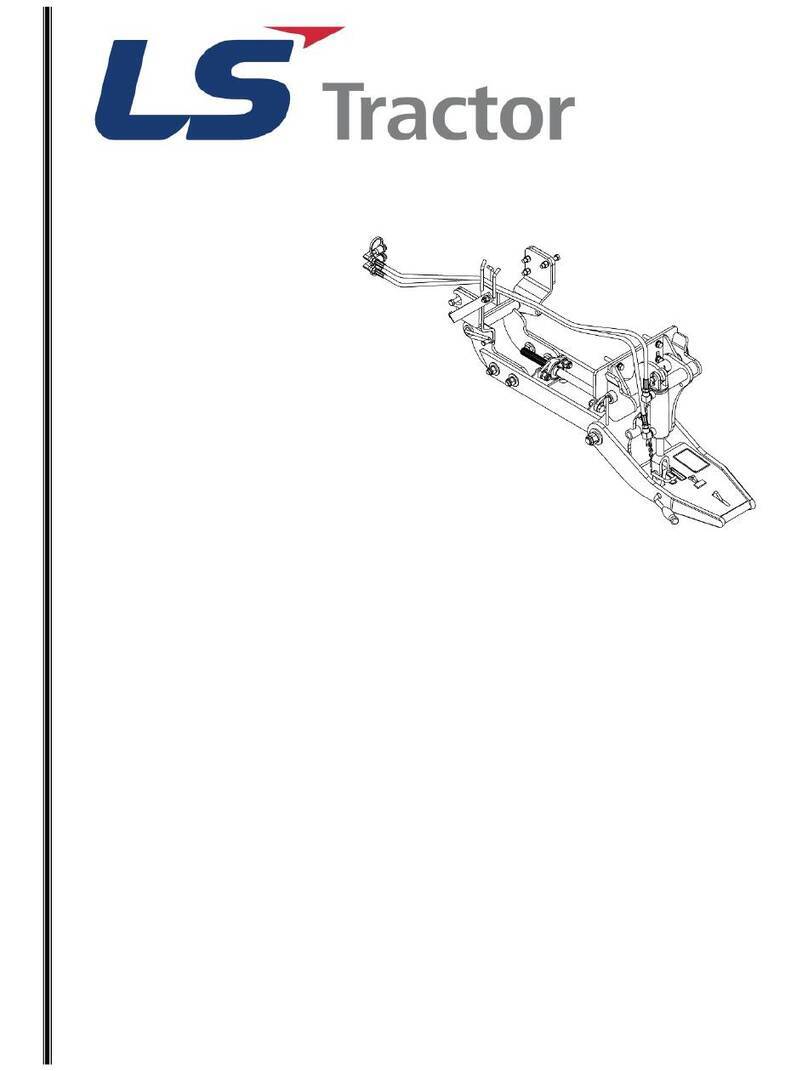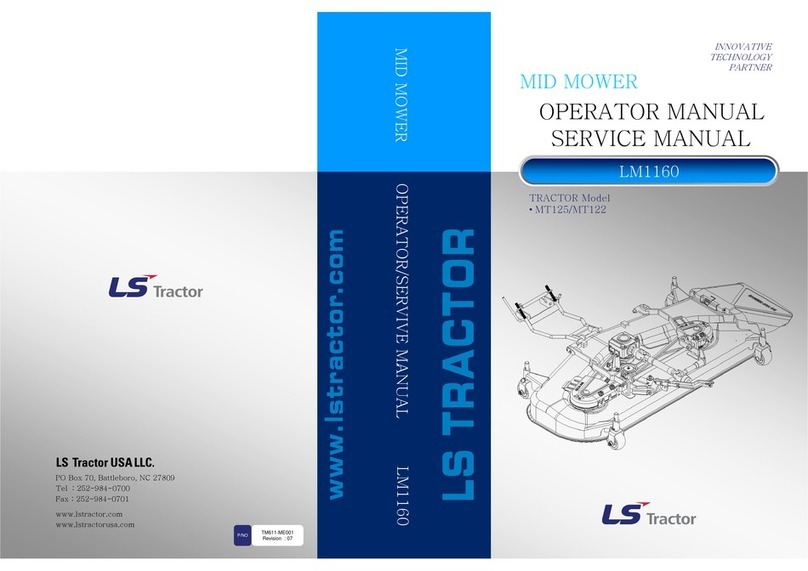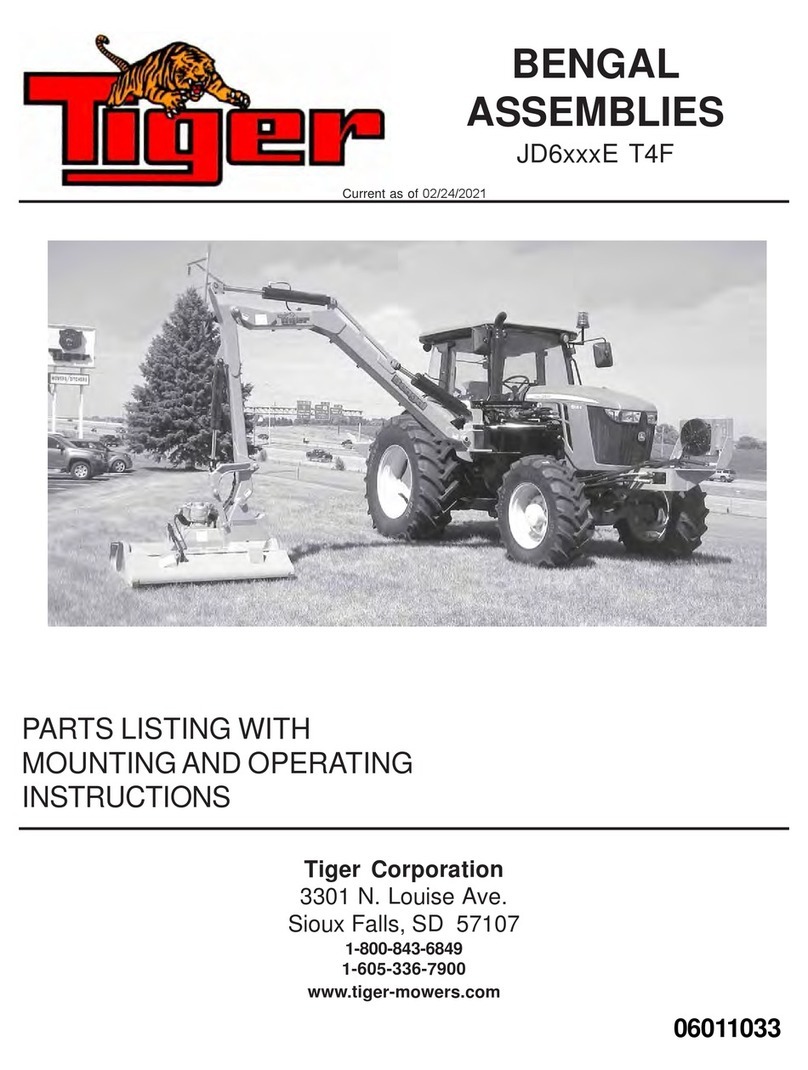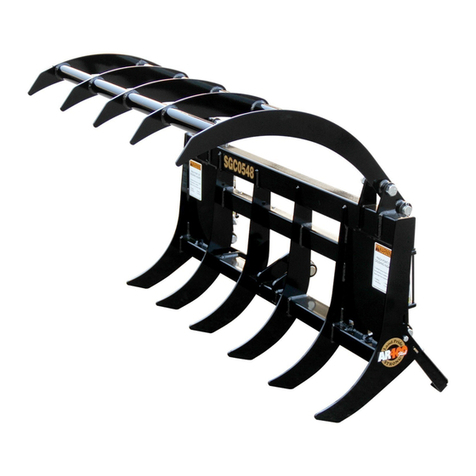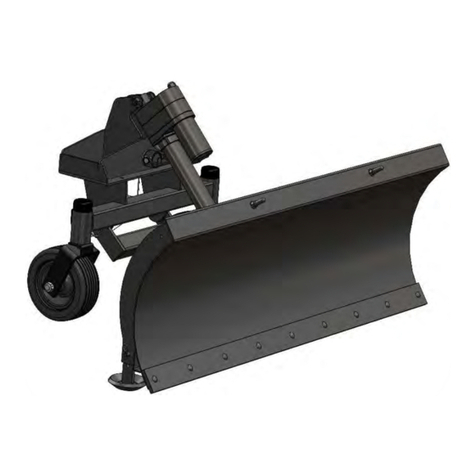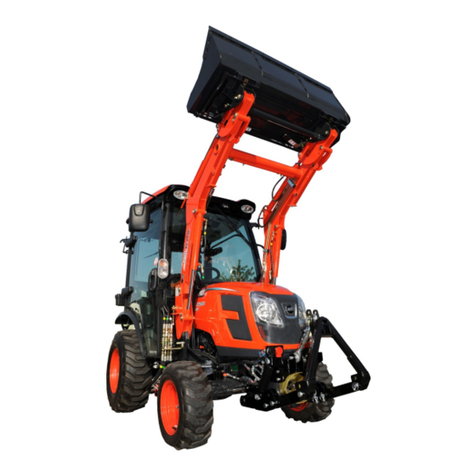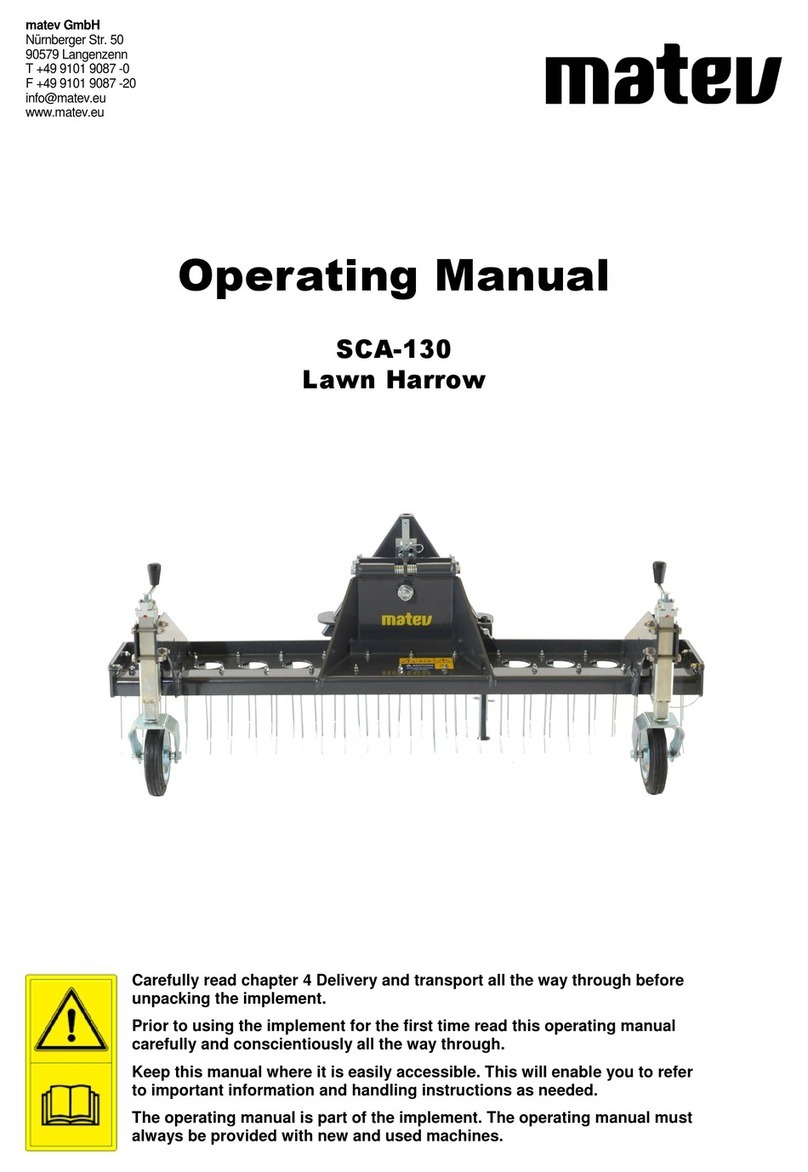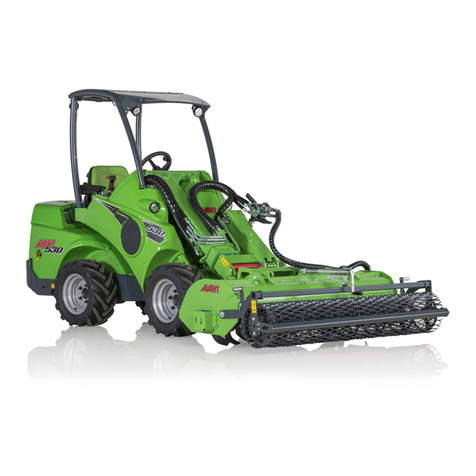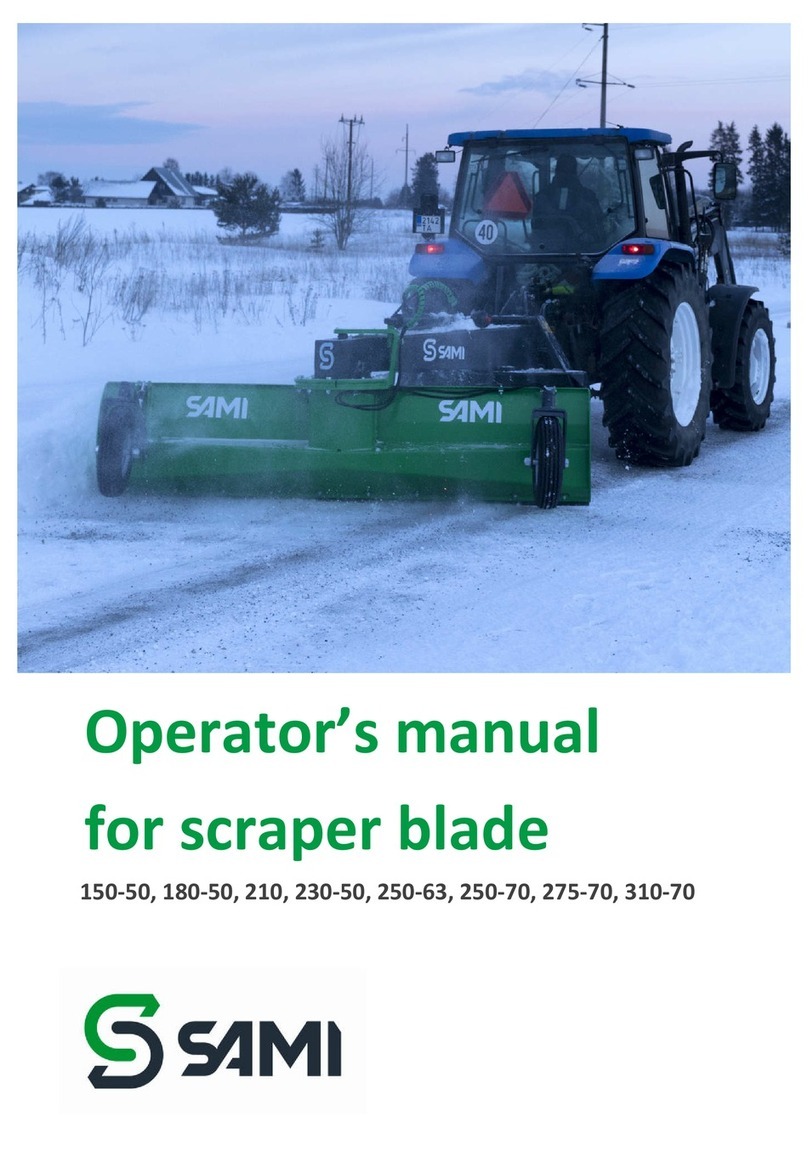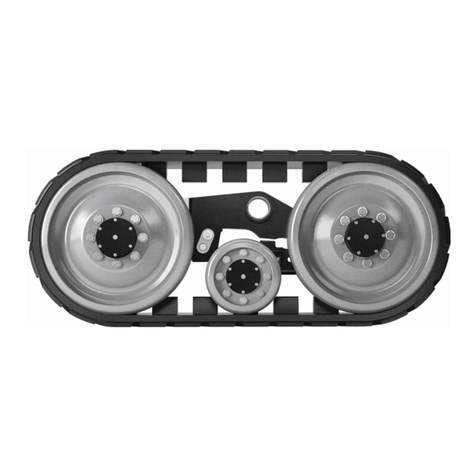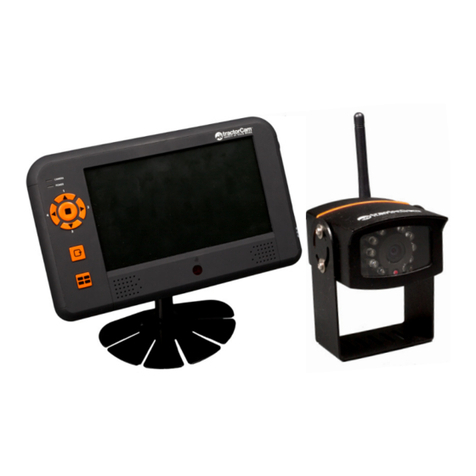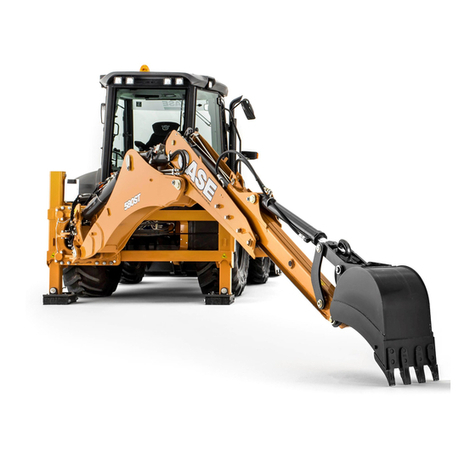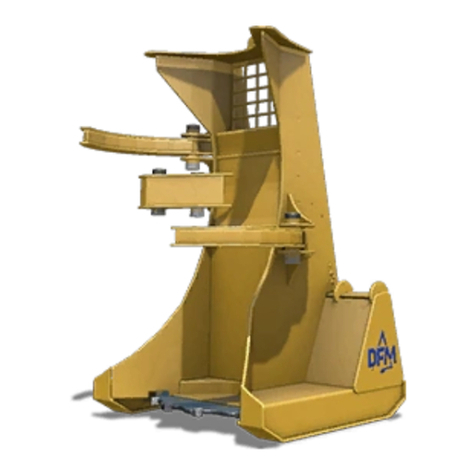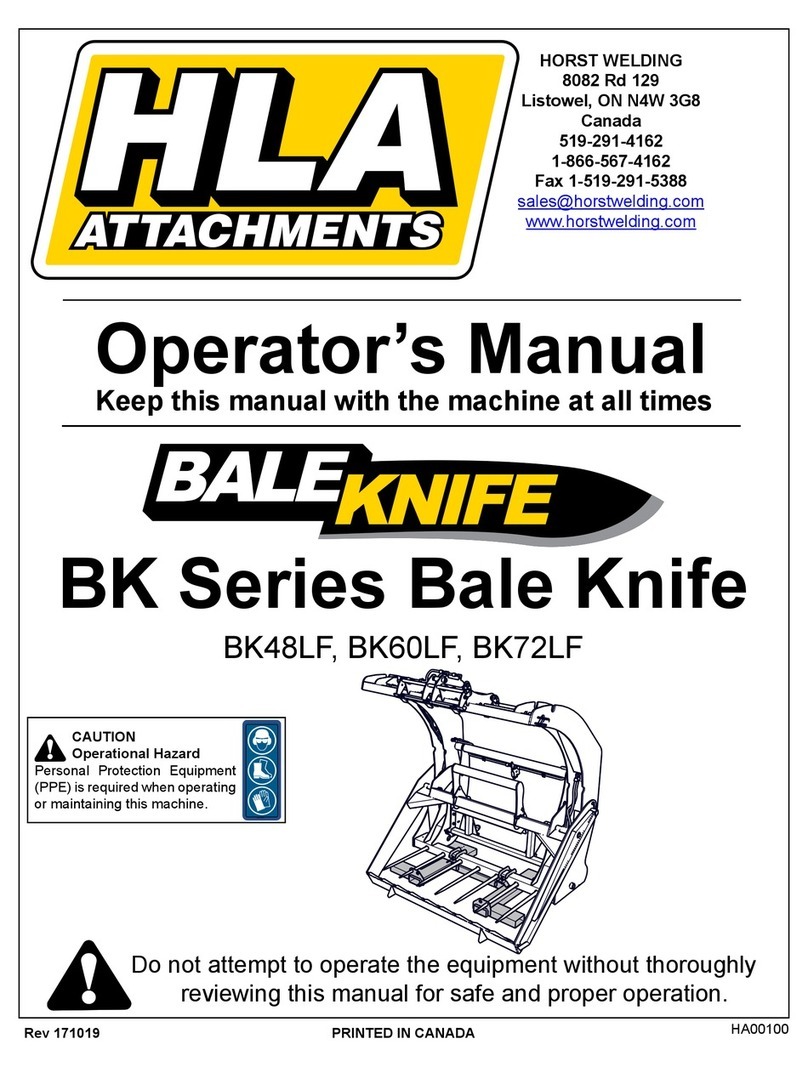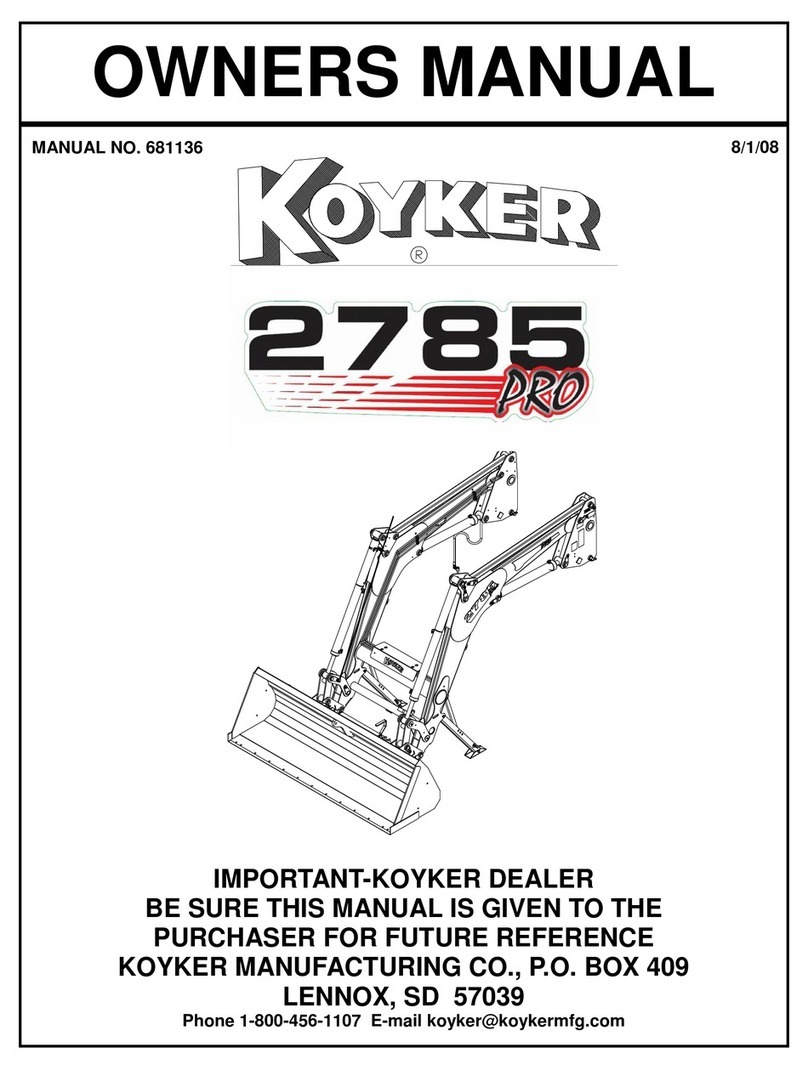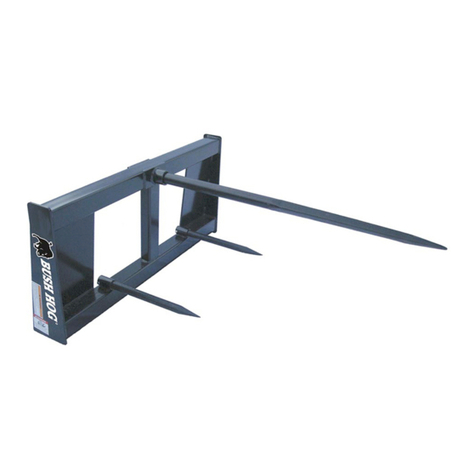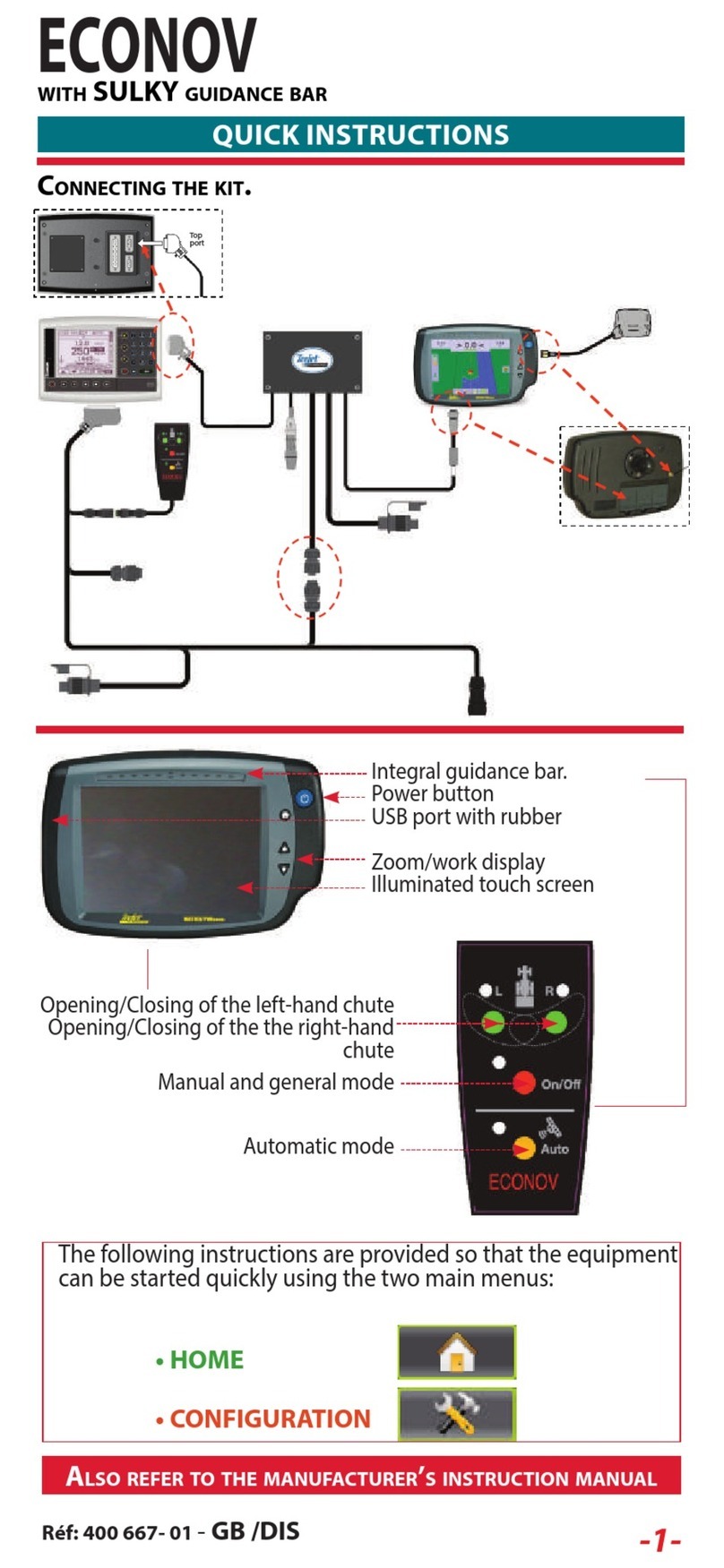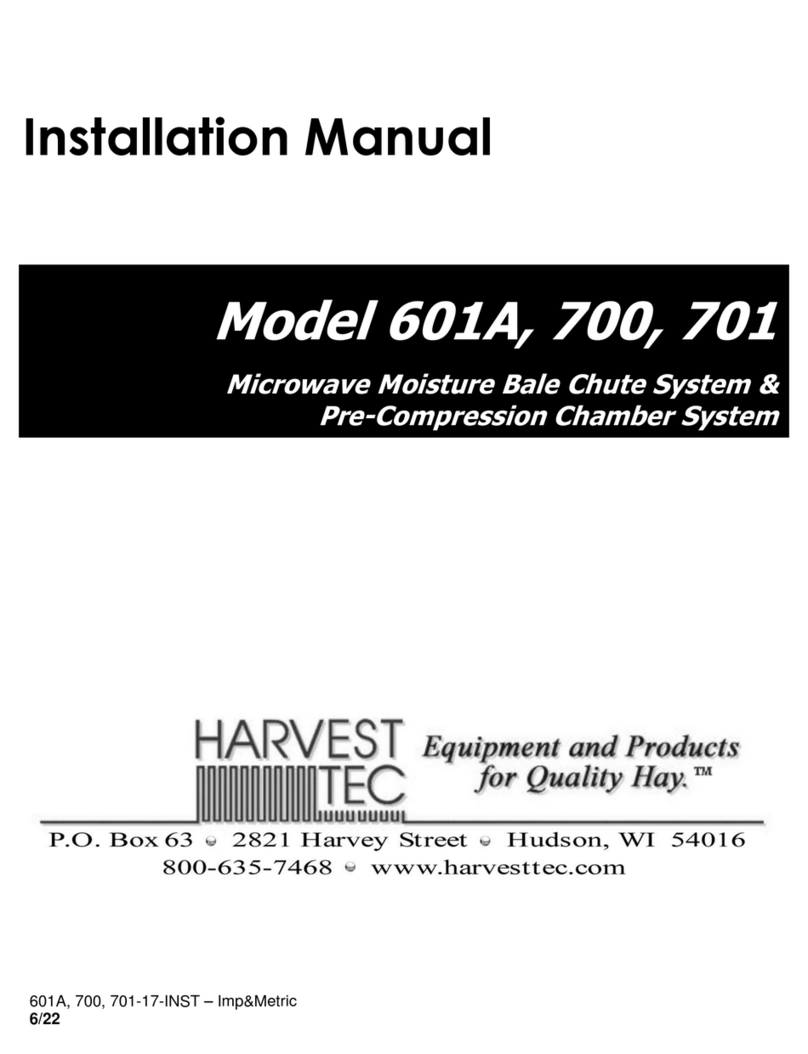
SAFETY PRECAUTIONS
PREPERATION
PREPERATIONPREPERATION
PREPERATION
▶ Move the wheels to the tractor manufacturer s widest recommended settings to increase stability.
▶
▶ Add rear ballast or rear weight to the tractor to compensate for the load and increase stability.
▶ Add recommended rear trie liquid weight or rear wheel weights for increased stability.
▶
▶
▶
BEFORE OPERATION
BEFORE OPERATIONBEFORE OPERATION
BEFORE OPERATION
▶
▶
OPERATION
OPERATIONOPERATION
OPERATION
The loader may shift during shipping and handling, making it unstable on the pallet. Support loader with
an overhead hoist or other suitable means prior to removing bands or attaching straps securing loader
to pallet. Failure do so could result in accidental tip-over of the loader that could cause serious injury to
Before starting the engine of your tractor, make sure all operating controls are in park lock or neutral
Be certain lights and safety markings, as provided by the tractor manufacturer, are clean and operating
when transporting the tractor/loader on public roads. Be certain that the Slow Moving Vehicle (SMV)
emblem is visible. Check with local law enforcement for specific requirements.
SAFETY PRECAUTIONS
SAFETY PRECAUTIONSSAFETY PRECAUTIONS
SAFETY PRECAUTIONS
For better stability, always use a tractor equipped with a wide front axle, never use a tractor equipped
with a tricycle type front axle.
Do not modify, alter, or permit anyone else to modify or alter the loader, any of its components, or any
loader function without first consulting a
Assemble, remove, and reinstall the loader only as directed in this manual. Failure to do this could
result in serious personal injury or death.
OPERATION
OPERATIONOPERATION
OPERATION
▶
▶ Additional counterweight requirements will vary with loader attachments and equipment application.
▶ Move and turn the tractor at low speeds.
▶ Carry loader boom at a low position during normal operation.
▶ Never travel at high speeds with bucket loaded.
▶ Use caution when operating the loader with a raised bucket or attachment.
▶
▶ Allow for the loader length when making turns.
▶ Use caution when handing loose or unstable loads.
▶ Gradually stop the loader boom when lowering or lifting loads.
▶
▶
▶
▶ Be careful during loading, transporting, and stacking to minimize rolling bales and tractor tip over.
▶ Do not use buckets, forks, or other attachments without bale retaining devices.
▶
▶
Add wheel ballast and/or rear weight to counterbalance tractor/loader for stability at maximum loader
Avoid driving over loose fill, rocks, holes, or anything that may be dangerous for loader operation or
When using remote hydraulic tractor valves on some tractors, the loader lift and dump cylinders will
continue moving unless the valve handle/handles are manually returned to neutral, or until relief
pressure is reached at the ends of piston strokes. Observe the bucket movement and maintain control
with valve handle/handles.
Travel speed should be such that complete control and machine stability is maintained at all times.
Where possible, avoid operating near ditches, embankments, and holes. Reduce speed when turning,
crossing slopes, and on rough, slick or muddy surfaces.
A loader attachment should be transported in a low position at slow ground speeds. Make turns slowly
and use the tractor brakes cautiously. A loaded attachment in the raised position alters the center of
gravity location of the machine and increases the possibility of mishaps.
Operate the tractor and loader such that complete control and machine stability is maintained at all
When using a loader, be alert of bucket or attachment position at all times. Loader in raised position
with bucket or attachment rolled back can dump material onto tractor causing damage or injury to
5
